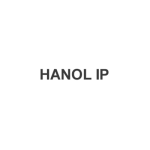In the wake of the outbreak of the COVID pandemic, there has been a substantial shift from the real world to the metaverse in the way trademarks are used. South Korea, an IT leader and content/design powerhouse, is one of the countries where trademarks are being very actively used in the virtual world.
For example, drawing great attention from the public, luxury brand Gucci opened Gucci Villa on Zepeto, a metaverse platform provided by the South Korean internet portal Naver. Many other famous brands such as Nike, MLB, and DKNY have also opened virtual shops on this platform.
Such platforms are not limited to fashion brands; Samsung Electronics is running a virtual booth called MyHouse for users to experience its various home appliances, and Hyundai Motor’s virtual Motostudio allows users to test-drive its new hybrid cars in Zepeto.
Like multiple virtual world platforms – such as Roblox, Fortnite, or Second Life – operating with a large number of users worldwide, it is said that more than 300 million people use Zepeto over 200 countries around the world, including the United States, China, and Japan, as well as South Korea.
Revised regulations
With the sudden rise of the virtual world, Korea needed new standards in the trademark field to embrace this change. In summer 2022, Korea revised its Trademark Act and added “transmission” of digital goods online as a type of “distribution” of goods that constitutes an act of trademark use. The revision is expected to facilitate legal measures against online trademark infringement.
The Korean Intellectual Property Office (KIPO) also revised its Examination Guidelines for Virtual Goods and updated the rules for determining the similarity of virtual goods. In the past, for example, ‘‘virtual clothing’’ could only be registered as a downloadable image file (virtual clothing) or recorded computer program for virtual clothing (virtual goods) in Class 9. Now, virtual clothing can be registered directly, whereas “virtual goods” not designating specific goods will be rejected for being an unclear description.
Previously, virtual goods filed in the form of downloadable image files for a specific item were considered similar to the image files or computer programs regardless of the field of usage thereof. Now, however, virtual items are regarded as dissimilar to image files or computer programs.
The similarity criteria ‘between’ the virtual goods resemble those of corresponding goods in the real world. For example, as in the real world, a virtual jacket and a virtual coat (both outerwear) are similar goods, whereas virtual clothing and virtual automobiles are dissimilar goods. Importantly, however, under the new system, virtual goods will be presumed to be dissimilar to real goods. Accordingly, virtual clothing and real clothing are dissimilar goods under these guidelines.
Given that virtual goods reflect the name and appearance of real goods, they are arguably similar to real goods. However, the KIPO views that the virtual goods are not likely to cause consumer confusion as to the source of goods with the corresponding actual goods, because the purpose of goods, usage, customers, or distribution channels thereof are different. As an exception, if a filed virtual trademark is identical or similar to a famous trademark, it will be examined as to whether the trademark would cause any confusion with the famous trademark.
New opportunities
The rise of the metaverse presents new opportunities for brand owners – regardless of whether the brand is new, weak, or famous – because it opens up a new space for them. Owners of famous trademarks may enjoy some protection even without filing their marks for virtual goods. However, in order to protect their marks more strongly in the virtual world, it is highly recommended that they file trademarks for virtual goods as well as products in the real world.











